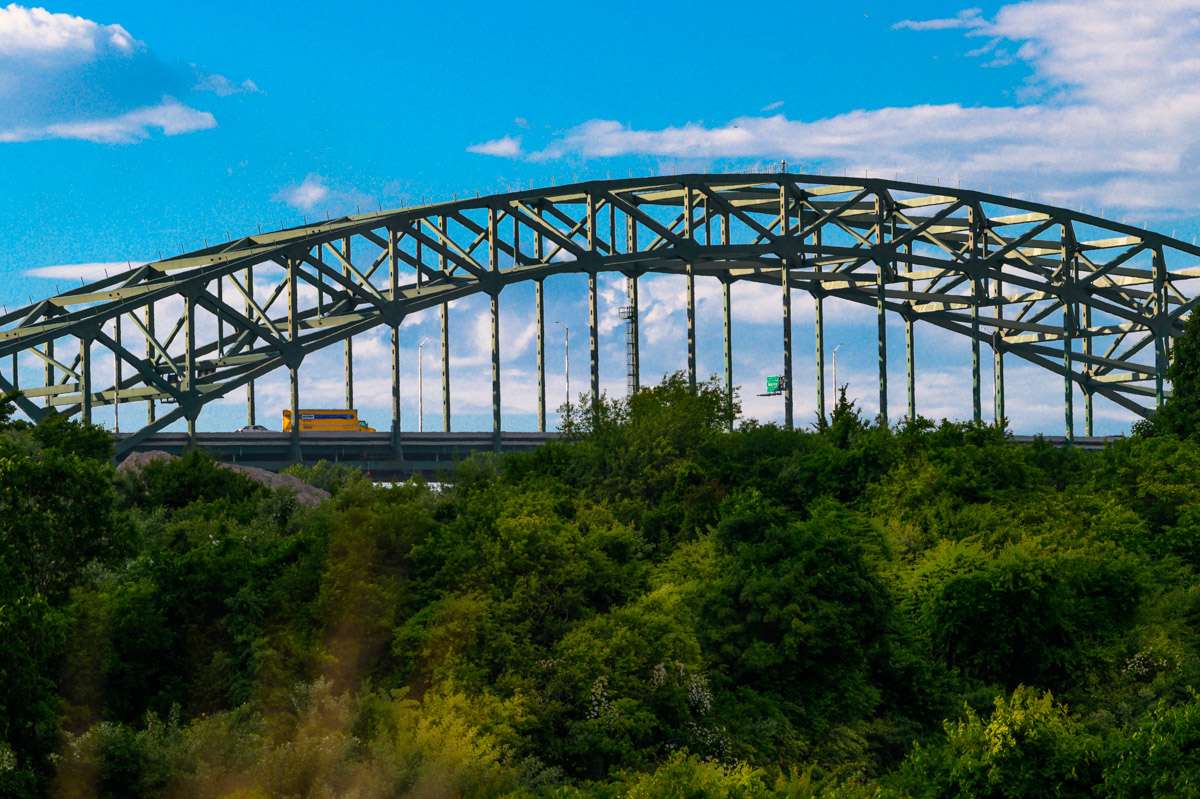
In eyes of a photographer, infrastructure tells the story of Maine’s history and progress
Fast road

Interstate 95 traffic crosses the Maine-New Hampshire border on the Piscataqua River Bridge. Built in 1972, the six-lane span underwent a $62 million facelift that was completed in spring 2022. Some 78,000 vehicles use the bridge daily, rising to 130,000 vehicles during the summer tourist season, according to the Maine Department of Transportation.
Ship-shape
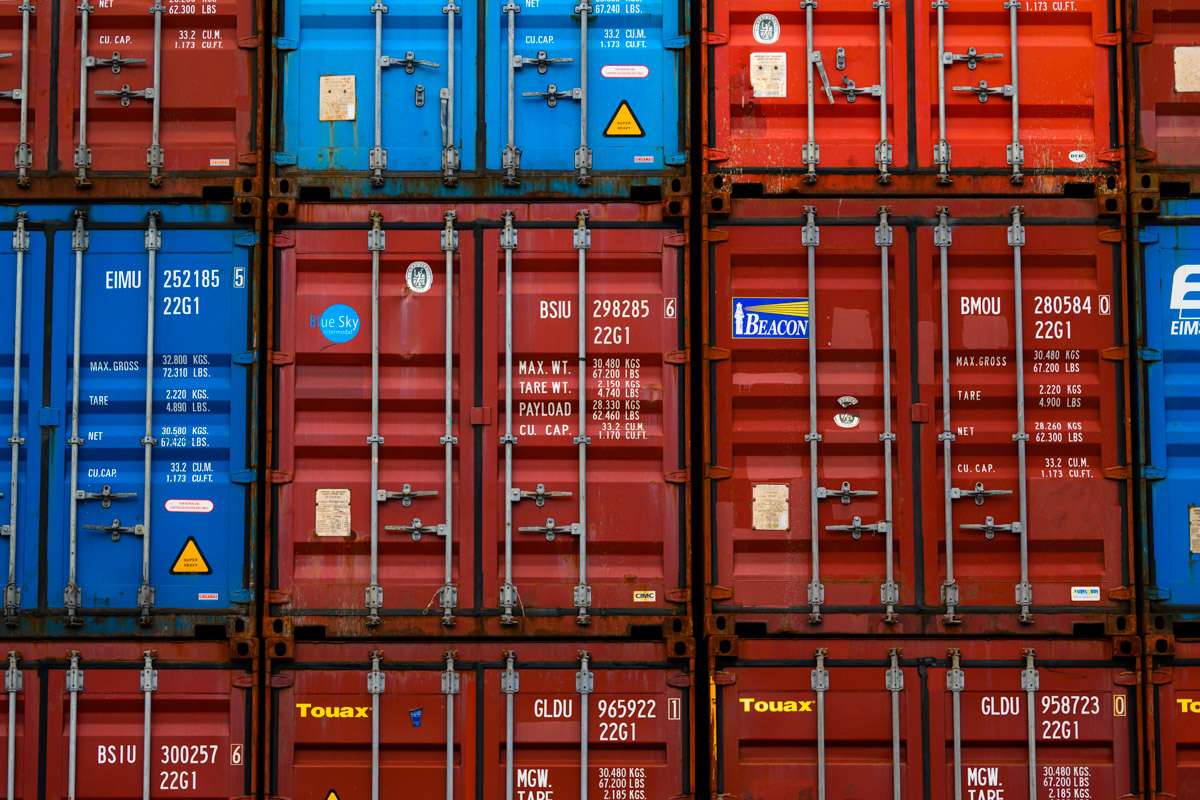
Bulk cargo, containers and petroleum products transit through the Port of Portland, the largest of Maine’s three cargo ports and the nearest American deep-water port to Europe. Nine terminals make up the facility, including the International Marine Terminal (shown here). Cargo is only part of the Portland waterfront story: passenger cruise ships dominate the harbor in the warmer months.
Slow road
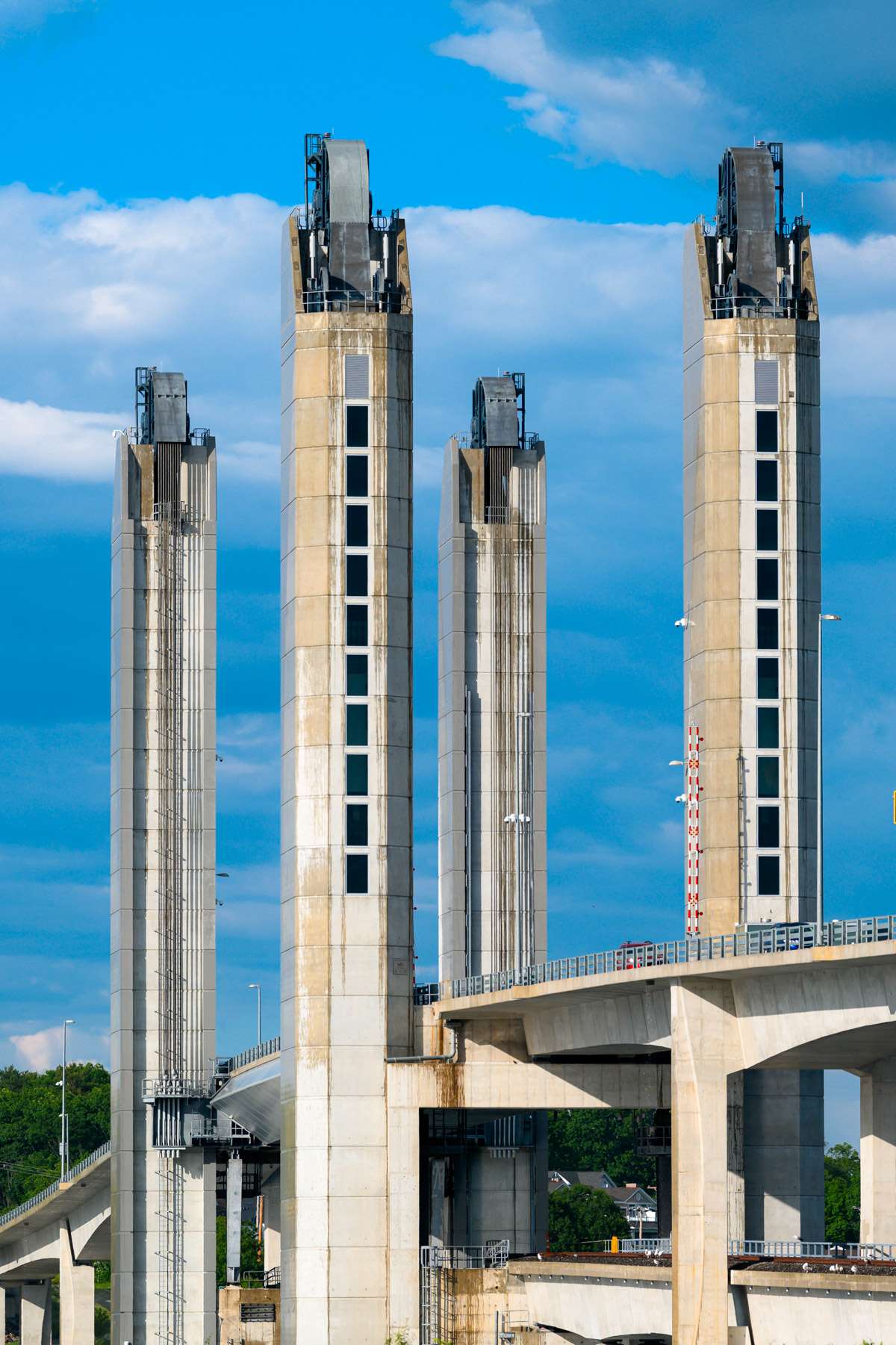
The more leisurely route across the Piscataqua River is the Sarah Mildred Long Bridge, carrying motor vehicles on the upper level and rail cargo below. Supported by four 200-foot-tall precast concrete towers, the current $159 million structure opened in 2018, replacing a bridge built in 1940, according to the Maine Department of Transportation. The bridge’s namesake served for half a century on the Maine-New Hampshire bridge management authority.
Train of thought
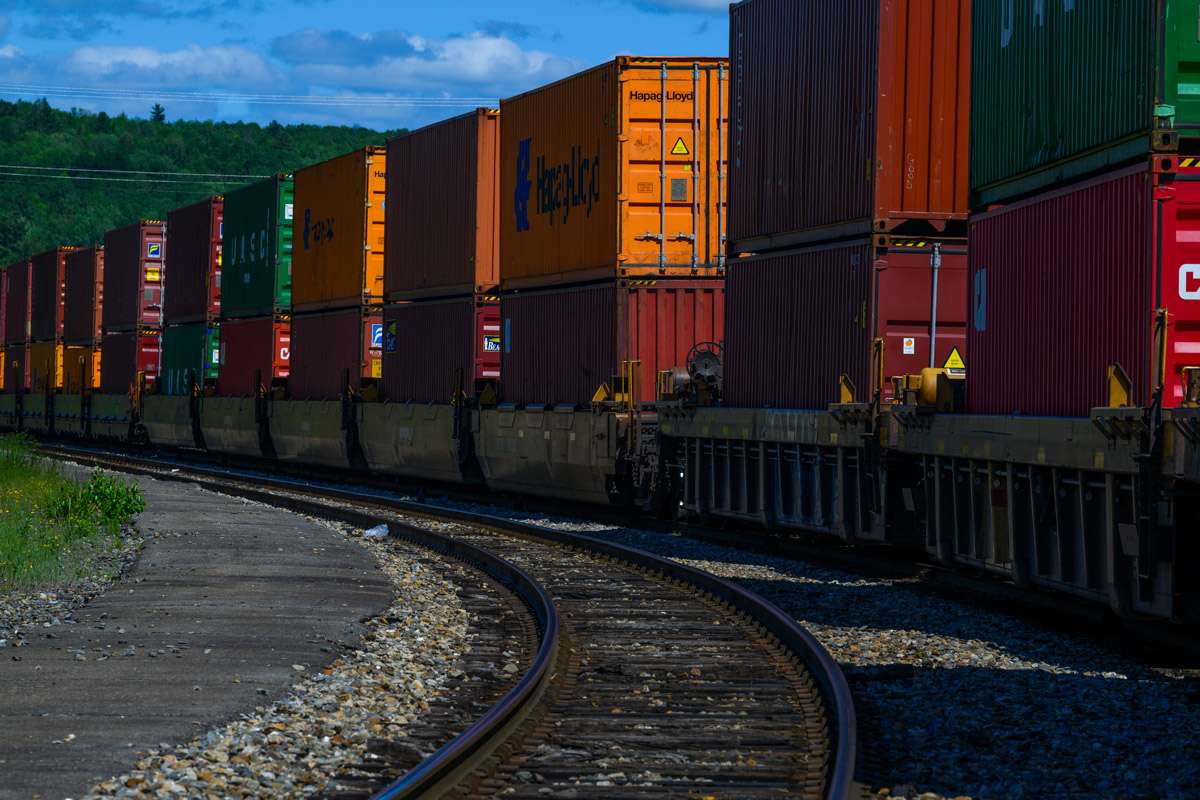
The fortunes of many towns in Maine’s interior have ebbed and flowed with the railroads that connect Canada with the Atlantic ports. The village of Brownville Junction grew up around the rail yard shown here. Now operated by Canadian Pacific, the rail hub sits on the shortest route between eastern Canada and principal markets in the U.S.
Bridge up
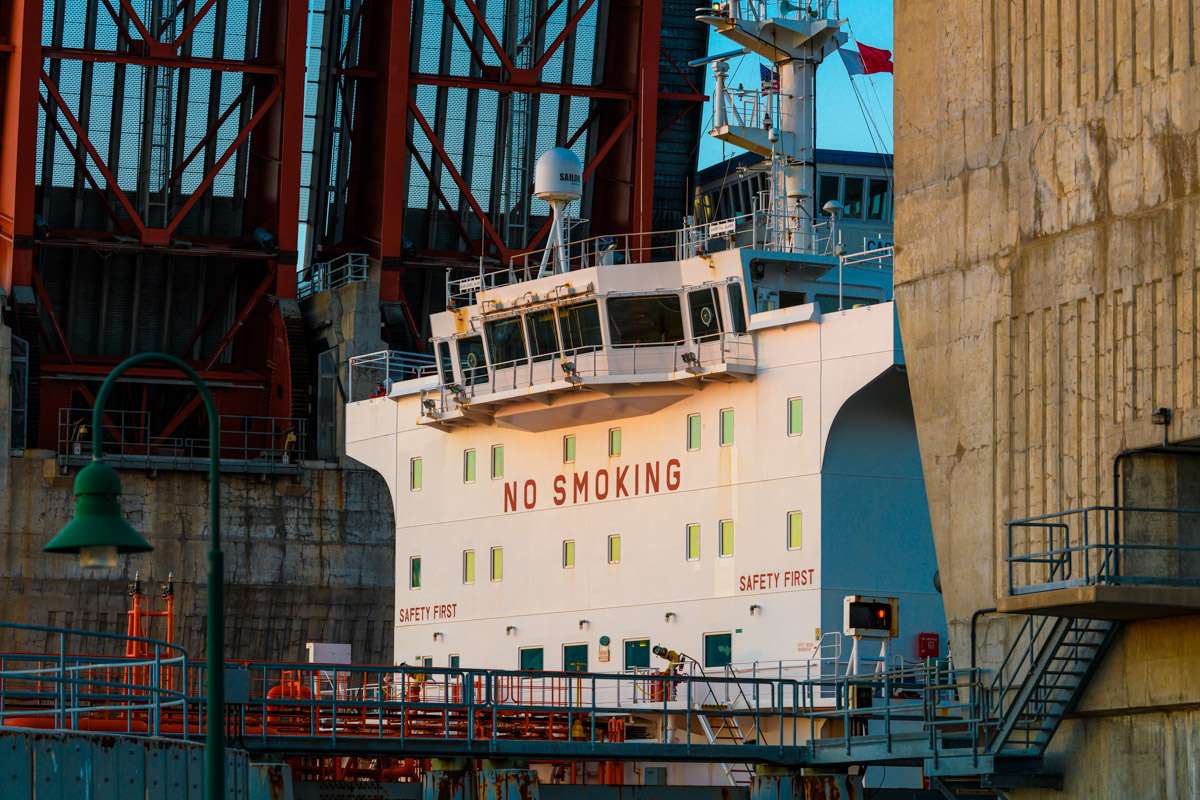
The Casco Bay Bridge opens up for a freighter to pass through en route to the Turners Island terminal of the Port of Portland, a spot on the infrastructure map since the construction of a rail link in 1847. The four-lane drawbridge is of newer vintage: it was built in 1997 to improve cargo access in Portland harbor.
Flying high

Dating back to grass runways first used in the 1920s, Portland International Jetport is Maine’s largest airport, with nonstop flights to hubs primarily in the eastern U.S. As airlines add back connections that were canceled during the pandemic, traffic in 2022 is heading back toward the peak of 2.2 million passengers that was recorded in 2019, the jetport says.
Drive time
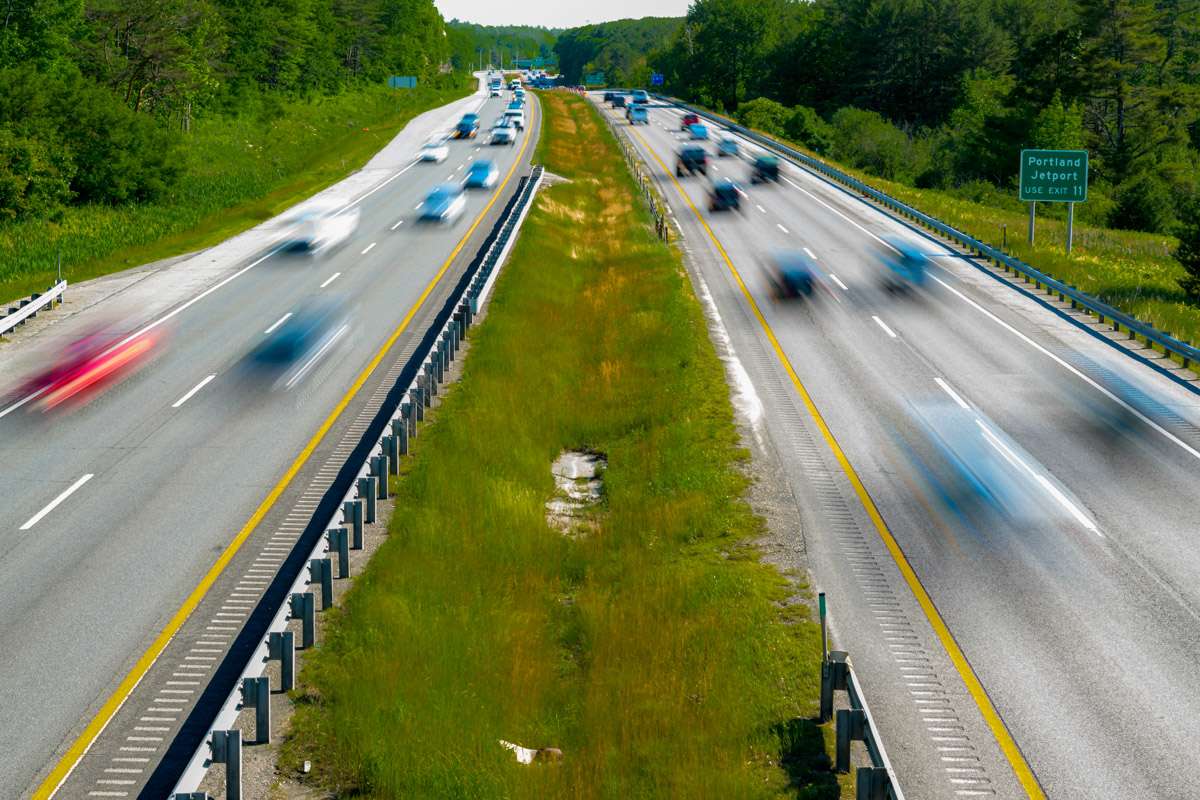
Maine boasts 365 miles of interstate highways, running from Kittery in the south to Houlton on the Canadian border. Tolls apply on a roughly 100-mile stretch operated by the Maine Turnpike Authority. The last section of the highway network was completed in 1981. This photo shows traffic near Falmouth, close to the first section that opened in 1957.











0 Comments